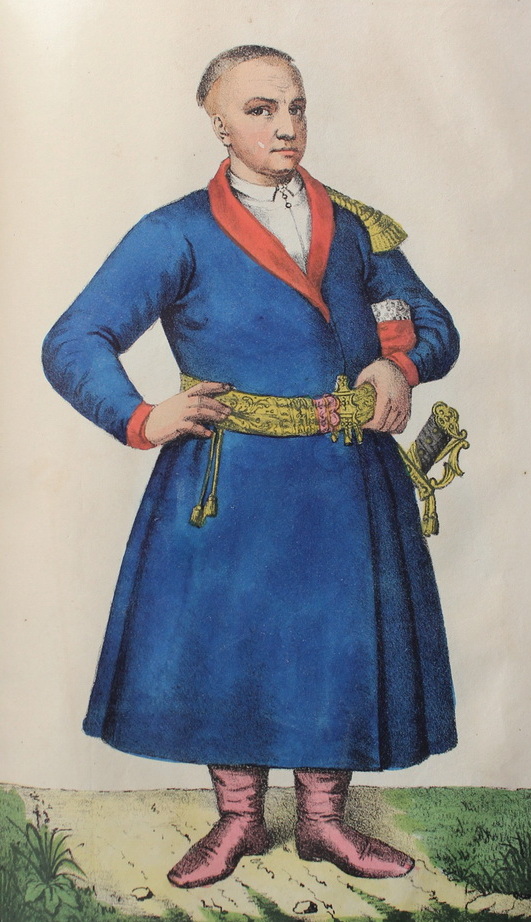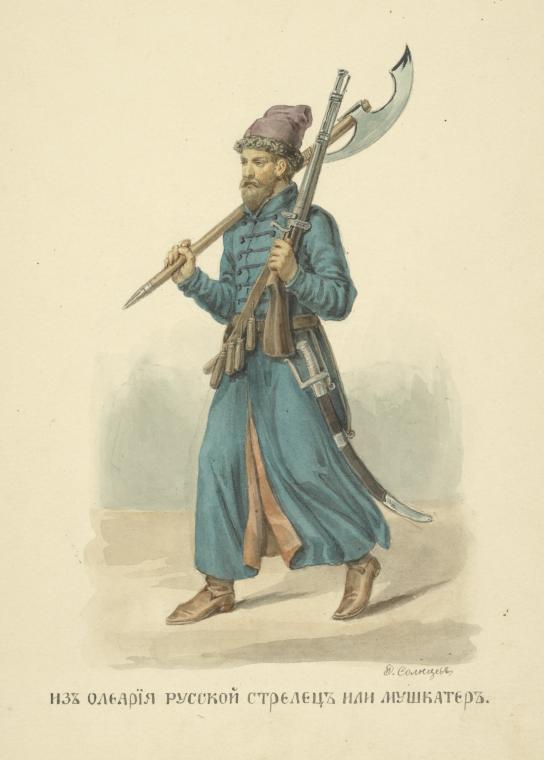|
Vikhorevka
Vikhorevka ( rus, Вихоревка, p=ˈvʲixərʲɪfkə) is a town in Bratsky District of Irkutsk Oblast, Russia, located on the left bank of the Vikhorevka River ( Angara River's tributary), northwest of Irkutsk, the administrative center of the oblast, and southwest of Bratsk. Population: History It was founded in 1957 as a workers' settlement due to the construction of the western section of the Baikal–Amur Mainline between Tayshet and Bratsk. The river, the railway station, and the town were named after Vikhor Savin, a Strelets '' sotnik'' who was killed here by the Tungus people in 1630. It was granted town status in 1966. Administrative and municipal status Within the framework of administrative divisions, Vikhorevka is subordinated to Bratsky District Bratsky District (russian: Бра́тский райо́н) is an administrative district, one of the thirty-three in Irkutsk Oblast, Russia.Charter of Irkutsk Oblast Municipally, it is incorporated as B ... [...More Info...] [...Related Items...] OR: [Wikipedia] [Google] [Baidu] |
Baikal–Amur Mainline
The Baikal–Amur Mainline (russian: Байкало-Амурская магистраль, , , ) is a broad-gauge railway line in Russia. Traversing Eastern Siberia and the Russian Far East, the -long BAM runs about 610 to 770 km (380 to 480 miles) north of and parallel to the Trans-Siberian Railway. The Soviet Union built the BAM as a strategic alternative route to the Trans–Siberian Railway, seen as vulnerable especially along the sections close to the border with China. The BAM's costs were estimated at $14 billion, and it was built with special, durable tracks since much of it ran over permafrost. Due to the severe terrain, weather, length and cost, Soviet general secretary Leonid Brezhnev described BAM in 1974 as "the construction project of the century". If the permafrost layer that supports the BAM railway line were to melt, the railway would collapse and sink into peat bog layers that cannot bear its weight. In 2016 and 2018 there were reports about climate chan ... [...More Info...] [...Related Items...] OR: [Wikipedia] [Google] [Baidu] |
Irkutsk Oblast
Irkutsk Oblast (russian: Ирку́тская о́бласть, Irkutskaya oblast; bua, Эрхүү можо, Erkhüü mojo) is a federal subject of Russia (an oblast), located in southeastern Siberia in the basins of the Angara, Lena, and Nizhnyaya Tunguska Rivers. The administrative center is the city of Irkutsk. It borders the Republic of Buryatia and the Tuva Republic in the south and southwest, which separate it from Khövsgöl Province in Mongolia; Krasnoyarsk Krai in the west; the Sakha Republic in the northeast; and Zabaykalsky Krai in the east. It had a population of 2,428,750 at the 2010 Census. Geography Irkutsk Oblast borders with the Republic of Buryatia and the Tuva Republic in the south and southwest, with Krasnoyarsk Krai in the west, with the Sakha Republic in the northeast, and with Zabaykalsky Krai in the east. The unique and world-famous Lake Baikal is located in the southeast of the region. It is drained by the Angara, which flows north a ... [...More Info...] [...Related Items...] OR: [Wikipedia] [Google] [Baidu] |
Oblast
An oblast (; ; Cyrillic (in most languages, including Russian and Ukrainian): , Bulgarian: ) is a type of administrative division of Belarus, Bulgaria, Kazakhstan, Kyrgyzstan, Russia, and Ukraine, as well as the Soviet Union and the Kingdom of Yugoslavia. Official terms in successor states of the Soviet Union differ, but some still use a cognate of the Russian term, e.g., ''vobłasć'' (''voblasts'', ''voblasts'', official orthography: , Taraškievica: , ) is used for regions of Belarus, ' (plural: ') for regions of Kazakhstan, and ''oblusu'' (') for regions of Kyrgyzstan. The term is often translated as "area", " zone", "province" or "region". The last translation may lead to confusion, because " raion" may be used for other kinds of administrative division, which may be translated as "region", "district" or "county" depending on the context. Unlike "province", translations as "area", "zone", and "region" may lead to confusion because they have very common meanings ... [...More Info...] [...Related Items...] OR: [Wikipedia] [Google] [Baidu] |
Evenks
The Evenks (also spelled Ewenki or Evenki based on their endonym )Autonym: (); russian: Эвенки (); (); formerly known as Tungus or Tunguz; mn, Хамниган () or Aiwenji () are a Tungusic people of North Asia. In Russia, the Evenks are recognised as one of the indigenous peoples of the Russian North, with a population of 38,396 ( 2010 census). In China, the Evenki form one of the 56 ethnic groups officially recognised by the People's Republic of China, with a population of 30,875 ( 2010 census). There are 537 Evenks in Mongolia (2015 census), called '' Khamnigan'' in the Mongolian language. Origin The Evenks or Ewenki are sometimes conjectured to be connected to the Shiwei people who inhabited the Greater Khingan Range in the 5th to 9th centuries, although the native land of the majority of Evenki people is in the vast regions of Siberia between Lake Baikal and the Amur River. The Ewenki language forms the northern branch of the Manchu-Tungusic language g ... [...More Info...] [...Related Items...] OR: [Wikipedia] [Google] [Baidu] |
Sotnik
Sotnik or sotnyk (, uk, сотник, bg, стотник) was a military rank among the Cossack '' starshyna'' (military officers), Strelets Troops (17th century) in Muscovy and Imperial Cossack cavalry (since 1826), the Ukrainian Insurgent Army, the Ukrainian Galician Army, and the Ukrainian People's Army. Administrative rank Holders of the rank also served as leaders of territorial units. In the Cossacks' paramilitary society of the Zaporozhian Host, Cossack Hetmanate, and Sloboda Ukraine, territories were organized along the lines of military organization and commanded by officers. During the Khmelnytsky Uprising and in the Cossack Hetmanate (17th-18th centuries), ''sotnyks'' were leaders of territorial administrative subdivisions called ''sotnyas''. Such sotnyks were subordinated to ''polkovnyks'' (colonel) who were in control of a polk (primary administrative division) and a regiment (military unit). Military ranks The word ''sotnik'' literally means ''commander of a hun ... [...More Info...] [...Related Items...] OR: [Wikipedia] [Google] [Baidu] |
Streltsy
, image = 01 106 Book illustrations of Historical description of the clothes and weapons of Russian troops.jpg , image_size = , alt = , caption = , dates = 1550–1720 , disbanded = , country = Tsardom of Russia , allegiance = Streltsy Department , branch = , type = Infantry , role = , size = , command_structure = Russian Army , garrison = Moscow , garrison_label = , nickname = , patron = Saint George , motto = , colors = , colors_label = , march = , mascot = , anniversaries = , equipment = , equipment_label = , battles = Siege of Kazan Livonian War Battle of Molodi Polish–Muscovite War (1605–1618) Smolensk WarRusso-Polish War (1654–1667)Great Northern War , battles_label = , decorations = , battle_honours = , battle_honours_label = , flying_hours = , website = , current_commander = , commander1 = , commander1_label = , commander2 = , commander2_label = , commander3 = , commander3_label = , commander4 = , commander4_label = , ... [...More Info...] [...Related Items...] OR: [Wikipedia] [Google] [Baidu] |
Tayshet
Tayshet ( rus, Тайшет, p=tɐjˈʂɛt, lit. ''cold river'' in the Kott language) is a town and the administrative center of Tayshetsky District in Irkutsk Oblast, Russia, located northwest of Irkutsk, the administrative center of the oblast. Population: History It was founded in 1897 as a supply point and station on the Trans-Siberian Railway and was granted town status in 1938. During the 1930s–1950s, Tayshet was the center of administration for gulag labor camps Ozerlag and Angarstroy. Construction of the first section of the Baikal–Amur Mainline started in 1937 and was managed from here. According to some survivor accounts, between Tayshet and Bratsk there is "a dead man under every sleeper." Along with Japanese prisoners from the Kwantung Army, German prisoners of war formed a large proportion of the forced labor contingent, generally under a 25-year sentence, such as Dietrich von Saucken. Surviving German POWs were repatriated in autumn of 1955, after West G ... [...More Info...] [...Related Items...] OR: [Wikipedia] [Google] [Baidu] |
Bratsk
Bratsk ( rus, Братск, p=bratsk) is a city in Irkutsk Oblast, Russia, located on the Angara River near the vast Bratsk Reservoir. Etymology The name sounds like the Russian word for "brother" ("", ''brat''), and derives from the phrase 'bratskiye lyudi', literally ''brotherly people''. History The first Europeans in the area arrived in 1623, intending to collect taxes from the local Buryat population. Permanent settlement began with the construction of an '' ostrog'' (fortress) in 1631 at the junction of the Oka and Angara rivers. Several wooden towers from the 17th-century fort are now exhibited in Kolomenskoye Estate of Moscow. During World War II, there was an increase in industrial activity in Siberia, as Soviet industry was moved to the lands east of the Ural Mountains. After the war's end, development slowed as resources were required in the rebuilding of European Russia. In 1947, the Gulag Angara prison labor camp was constructed near Bratsk, with capacity for up t ... [...More Info...] [...Related Items...] OR: [Wikipedia] [Google] [Baidu] |
Administrative Center
An administrative center is a seat of regional administration or local government, or a county town, or the place where the central administration of a commune is located. In countries with French as administrative language (such as Belgium, Luxembourg, Switzerland and many African countries), a (, plural form , literally 'chief place' or 'main place'), is a town or city that is important from an administrative perspective. Algeria The capital of an Algerian province is called a chef-lieu. The capital of a district, the next largest division, is also called a chef-lieu, whilst the capital of the lowest division, the municipalities, is called agglomération de chef-lieu (chef-lieu agglomeration) and is abbreviated as A.C.L. Belgium The chef-lieu in Belgium is the administrative centre of each of the ten provinces of Belgium. Three of these cities also give their name to their province ( Antwerp, Liège and Namur). France The chef-lieu of a département is known as the '' ... [...More Info...] [...Related Items...] OR: [Wikipedia] [Google] [Baidu] |
Bratsky District
Bratsky District (russian: Бра́тский райо́н) is an administrative district, one of the thirty-three in Irkutsk Oblast, Russia.Charter of Irkutsk Oblast Municipally, it is incorporated as Bratsky Municipal District.Law #76-oz It is located in the northwest of the oblast. The area of the district is . Its administrative center is the city of BratskLaw #49-OZ (which is not administratively a part of the district). Population: 65,240 ( 2002 Census); Administrative and municipal status Within the framework of administrative divisions, Bratsky District is one of the thirty-three in the oblast. The city of Bratsk serves as its administrative center An administrative center is a seat of regional administration or local government, or a county town, or the place where the central administration of a commune A commune is an alternative term for an intentional community. Commune or comună or ..., despite being incorporated separately as an administrative unit with t ... [...More Info...] [...Related Items...] OR: [Wikipedia] [Google] [Baidu] |
Irkutsk
Irkutsk ( ; rus, Иркутск, p=ɪrˈkutsk; Buryat language, Buryat and mn, Эрхүү, ''Erhüü'', ) is the largest city and administrative center of Irkutsk Oblast, Russia. With a population of 617,473 as of the 2010 Census, Irkutsk is the List of cities and towns in Russia by population, 25th-largest city in Russia by population, the fifth-largest in the Siberian Federal District, and one of the largest types of inhabited localities in Russia, cities in Siberia. Located in the south of the eponymous oblast, the city proper lies on the Angara River, a tributary of the Yenisei River, Yenisei, about 850 kilometres (530 mi) to the south-east of Krasnoyarsk and about 520 kilometres (320 mi) north of Ulaanbaatar. The Trans-Siberian Highway (Federal M53 and M55 Highways) and Trans-Siberian Railway connect Irkutsk to other regions in Russia and Mongolia. Many distinguished Russians were sent into exile in Irkutsk for their part in the Decembrist revolt of 1825, and t ... [...More Info...] [...Related Items...] OR: [Wikipedia] [Google] [Baidu] |





_(10004827914).jpg)
